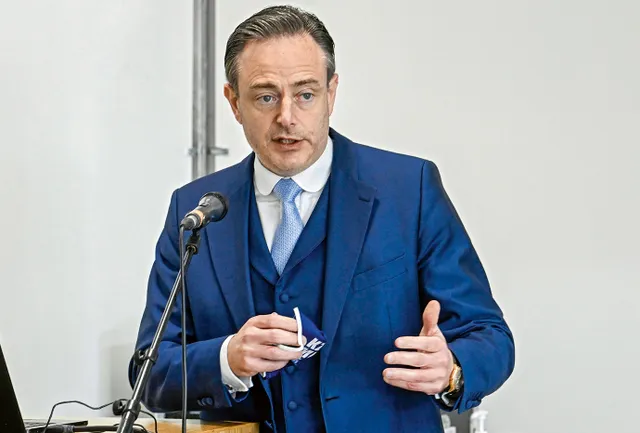The radicalized young people who were arrested on Monday as part of a terror investigation in Brussels, Antwerp and Eupen wanted to kill Bart De Wever (N-VA) and attack police stations. The Mediahuis newspapers write that on Friday.
On Monday, eight suspects were arrested in two investigative actions in Brussels and Antwerp after house searches in Molenbeek and Schaarbeek, among others, due to a possible terrorist attack. The investigators had been keeping an eye on the young people for some time because they would have radicalized at a rapid pace. Not only did they make plans to attack police stations, they also wanted to kill N-VA chairman Bart De Wever. The ban on headscarves in Antwerp, where counter staff are not allowed to wear visible religious signs, is said to have been one of the motives.
The federal prosecutor confirms that the Antwerp branch of the terrorist group made plans to liquidate N-VA chairman Bart De Wever. “De Wever’s name did indeed fall into the Antwerp investigation,” says Eric Van der Sypt, spokesman for the federal prosecutor’s office. “But it is not the case that a day and an hour had already been set for the attack to take place. It was not that concrete now.”
OCAD List
De Wever himself could not be reached for comment. “This is a judicial matter on which we cannot comment,” said his spokesman. In an interview in De Ochtend (Radio 1), Minister of Justice Vincent Van Quickenborne also confirmed that “the name of Bart De Wever had come up”, but that the plans of the radicalized young people were not yet concrete. “But our services took no risks and intervened disruptively as soon as there was violence.” For questions about the motives of the suspects, the minister referred to the public prosecutor’s office. According to Van Quickenborne, it is true that not all suspects were on the OCAD list of terror suspects, but the four main suspects were in any case.
Later on Friday, the federal council of ministers will approve a bill from the minister to improve the flow of information about persons on that list. For example, data will be allowed to be shared with medical staff, while everyone on the list will also be screened at least twice a year, says Van Quickenborne.
This article is originally published on bruzz.be



